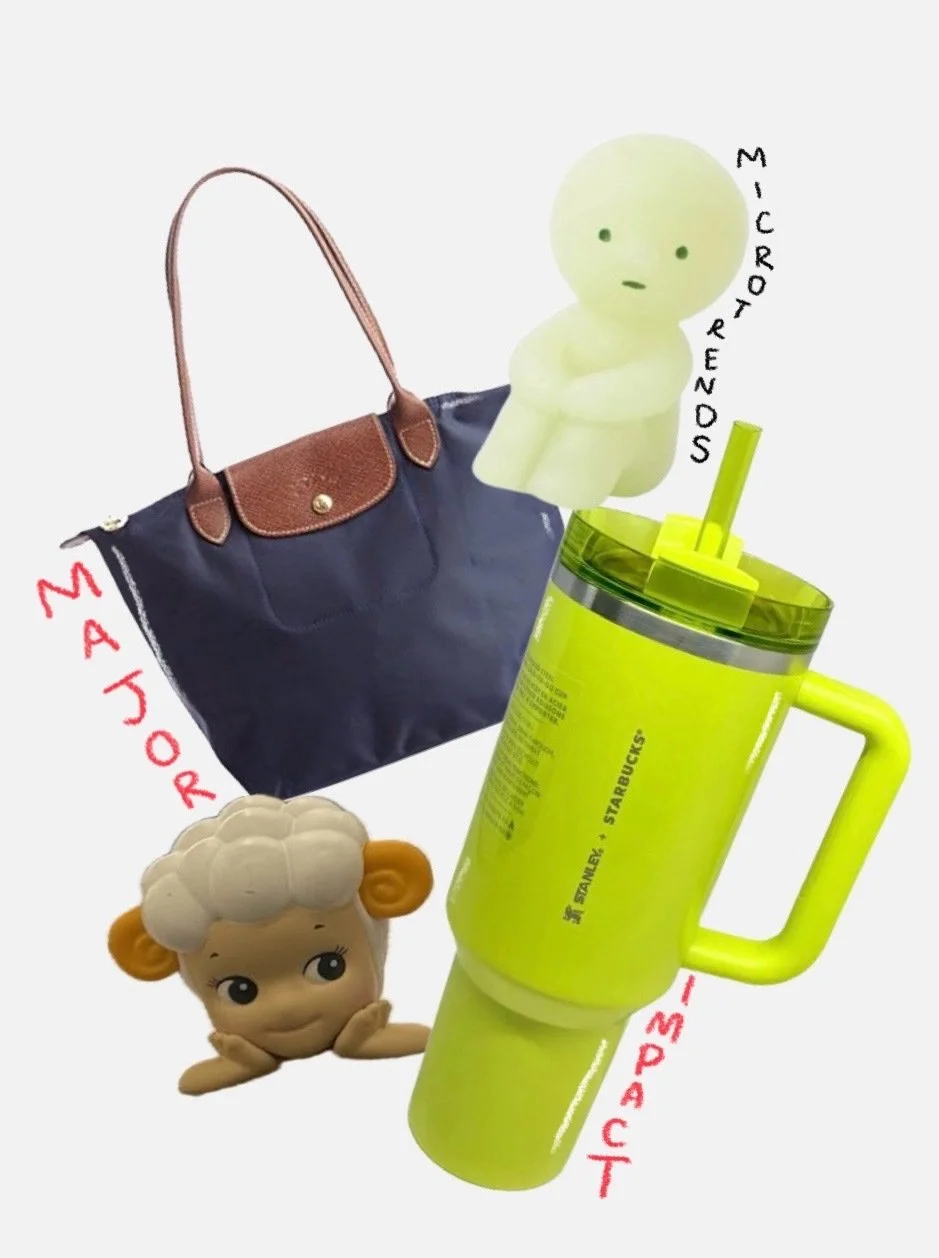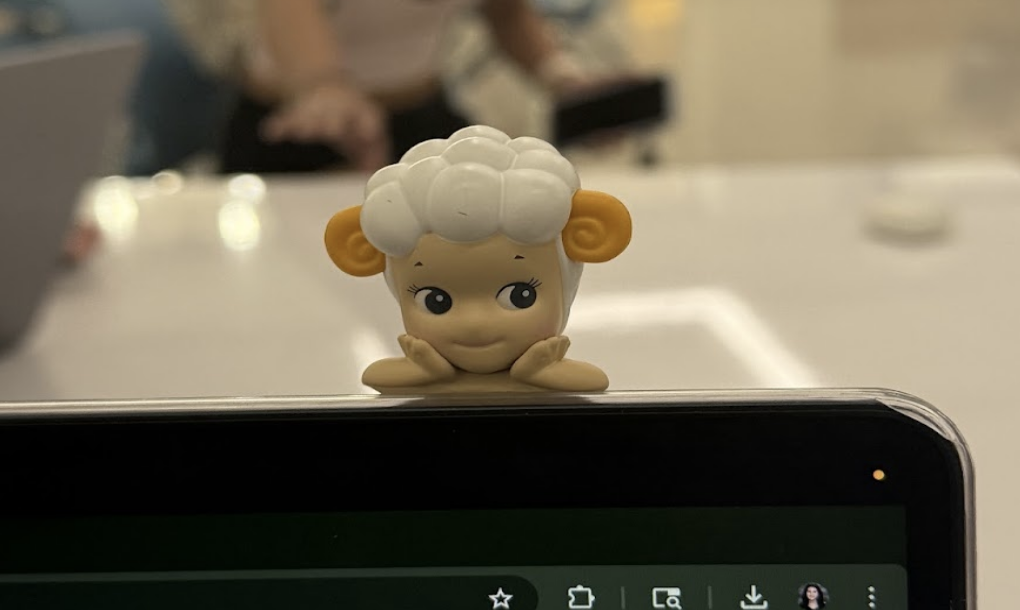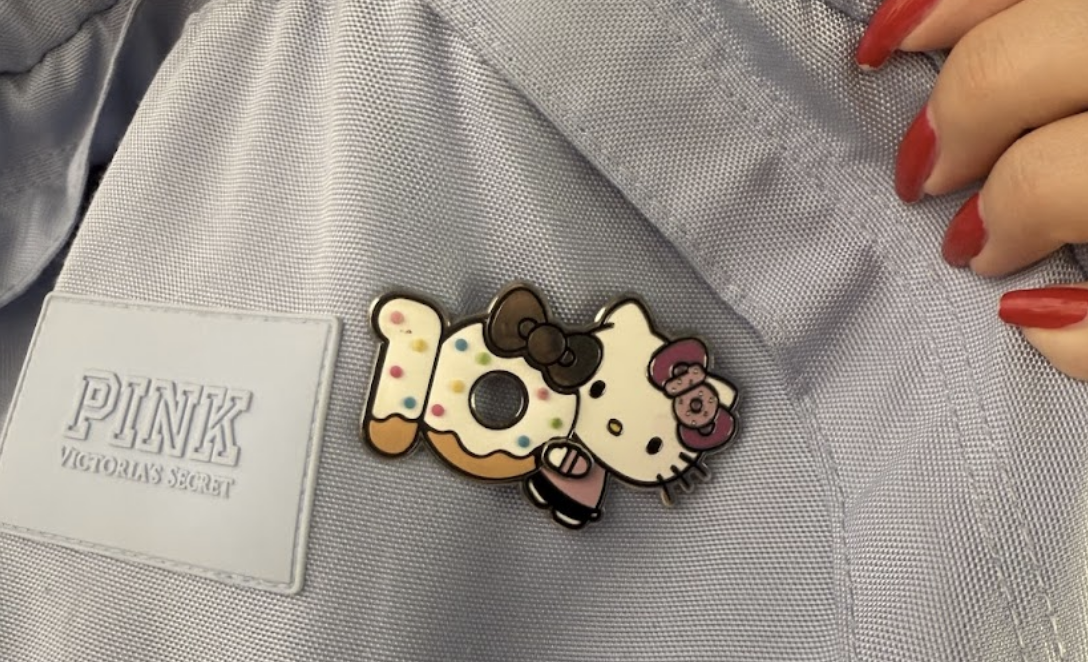Microtrends, Major Impact
Written by brina patel
Every semester has its unofficial uniform. This fall, it is Longchamp totes slung over shoulders, neon Stanley cups tucked into North Face backpack pockets, Owala bottles swapped between classes, and Van Cleef-inspired clover charms catching the light. Add in cheetah print skirts, Birkenstock clogs, ruffle socks, gameday polka dot dresses and scalloped edges, and you have a snapshot of the current microtrend cycle, and a lookbook to gain inspo from. These trends feel playful and nostalgic, but at the same time, they reveal a deeper meaning between sustainability, consumerism, and classism.
“It’s so dumb but so cute, I felt like I needed it”
At face value, many of these items present themselves as sustainable choices. Longchamp totes are foldable, durable, and reusable. Stanley tumblers and Owalas are marketed as long-term solutions to the waste of single-use plastic bottles. Birkenstocks have a reputation for lasting years if they are cared for properly. Yet when these products are purchased less for practicality and more as fast-moving social signals, their eco-friendly narrative starts to fall apart. Sustainability depends not only on what a product is made to do, but also on how it is used. A reusable water bottle only fulfills its purpose when it replaces disposable bottles, not when it becomes one of five sitting on a shelf waiting for the next TikTok-approved colorway.
Microtrends have always existed, but social media has accelerated their pace. TikTok, Instagram, and Pinterest do not just reflect trends; they generate them. A cheetah print skirt might rise to popularity for only a few weeks before scalloped-edge tops take over. Ruffle socks trend in a single pastel shade one month, then vanish from feeds the next. This churn is exciting because it creates rapid cycles of creativity, but it also highlights how quickly even supposedly sustainable items can slip into the same unsustainable patterns of overconsumption as fast fashion.
“I bought this at the Hello Kitty Cafe Pop Up, I saw it on Instagram and it was trending.”
Layered into this cycle is a class dimension. Longchamp bags and Birkenstocks are not the most expensive accessories, but they occupy a tier of “accessible luxury” that still requires disposable income. Meanwhile, Van Cleef jewelry or limited-edition Stanley drops exist in a higher category, where exclusivity and scarcity become part of the appeal. Keeping up with these trends is not just about taste; it is also about who has the means to afford multiple variations of essentially functional objects. For students, this can create social hierarchies based on who can buy the right version at the right moment. Sustainability becomes less about making environmentally conscious choices and more about proving that you can participate in a shared aesthetic culture.
“I have no clue what this is, I just bought it on TikTok shop”
Another complication is how brands themselves frame sustainability. Marketing often highlights durability, reusability, or eco-friendly materials, but these claims only hold weight if the consumer uses the product in a sustainable way. Owning three or four different water bottles because each was briefly trendy is not meaningfully better for the planet than using disposable bottles. Buying a sturdy Longchamp bag or a waterbottle that could last a decade, but then cycling through several because new colors or limited collaborations drop, turns a sustainable item into yet another part of the consumption churn.
“It was so popular 2 years ago and now it's cheugy, but I’m stuck with it”
Still, it is important to recognize why microtrends have so much cultural power. They allow people to participate in collective moments of fashion, to experiment with identity, and to connect with communities both online and in person. A pair of ruffle socks or polka dot skirts can carry nostalgia, whimsy, or individuality. A neon Stanley can feel like belonging. Microtrends are not inherently harmful, but they do raise important questions: How sustainable is an item if its main value comes from being seen at a particular moment? Can sustainability and trend culture ever truly coexist when novelty is built into the system?
Sustainability in the age of microtrends may ultimately depend on how we shift our collective mindset. Instead of asking what is popular right now, we might begin asking what will last. This is not just about durability in a physical sense, but about longevity in style, meaning, and personal value. A Longchamp tote used daily for years is sustainable. A Birkenstock clog worn across seasons and repaired when worn down is sustainable. An Owala bottle that actually replaces single-use plastics, not just one that sits next to two other bottles on a shelf, is sustainable.
Students today are navigating this balance between self-expression, social belonging, and environmental responsibility. Microtrends will not disappear, and they will continue to be fun, but the challenge is learning how to participate without getting swept up in the cycle of endless consumption. Sustainability may require slowing down in a culture that thrives on speed, and it may mean rethinking how we assign value to the objects we carry, wear, and post.
Photos taken by Brina Patel





